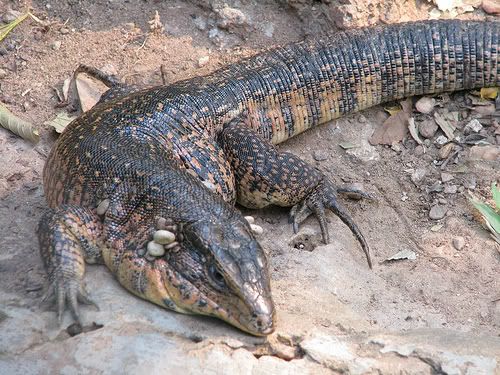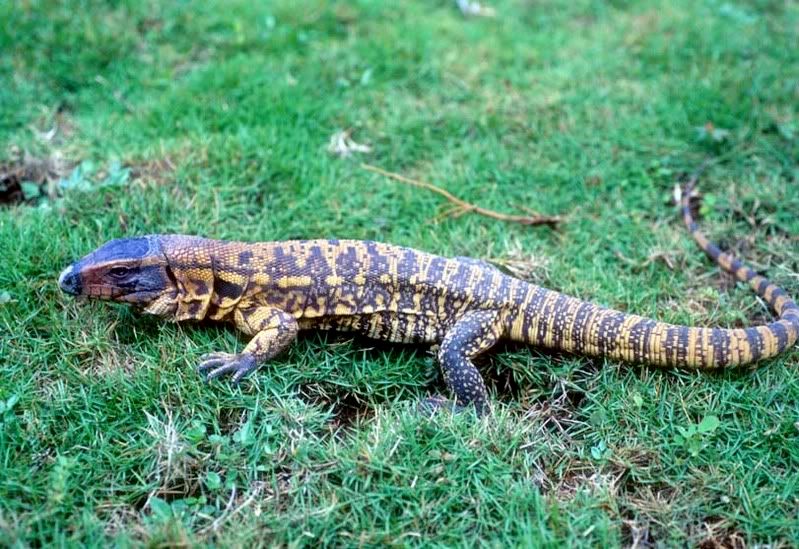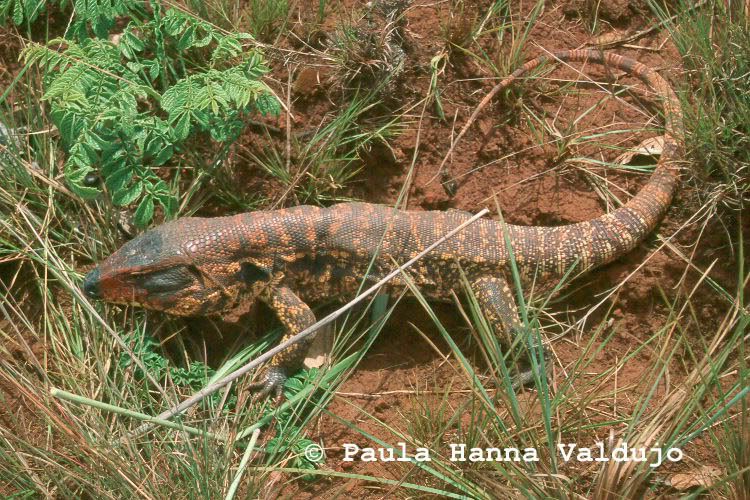-
Hello guest! Are you a Tegu enthusiast? If so, we invite you to join our community! Our site is specifically designed for you and it's a great place for Tegu enthusiasts to meet online. Once you join you'll be able to post messages, upload pictures of your Tegu and enclosure and have a great time with other Tegu fans. Sign up today! If you have any questions, problems, or other concerns email [email protected]!
You are using an out of date browser. It may not display this or other websites correctly.
You should upgrade or use an alternative browser.
You should upgrade or use an alternative browser.
found another odd lookin tegu
- Thread starter Mvskokee
- Start date
- Messages
- 1,922
I dunno who's fatter the ticks or the tegu. He's a lil on the obese side. Where did you find the pic?
- Messages
- 3,684
That is an adult Colombian Gold tegu.
- Messages
- 50
Sorry, Bobby, I not so sure that's Tupinambis teguixin at all. The head shape and, from what I can see of, the cranial scalation is wrong. That looks like what is currently classified as Tupinambis quadrilineatus.
- Messages
- 3,684
tupinambis said:Sorry, Bobby, I not so sure that's Tupinambis teguixin at all. The head shape and, from what I can see of, the cranial scalation is wrong. That looks like what is currently classified as Tupinambis quadrilineatus.
I was under the impression that the T. quadrilineatus looked more like this.

I seen I adult Golden at Daytona last year that could have been that tegu's twin.
- Messages
- 50
Rostral pentagonal, wider than tall, visible from above, separated from frontonasal by upper nasals. Frontonasal hexagonal, approximately as long as wide. Prefontals irregular, hexagonal, longer than wide, about as long as frontal. Frontal irregular, octagonal, almost elliptical, longer than wide, with anterior and posterior parts of similar width, reaching middle of orbits, in contact with first and second supraoculars. A pair of irregular, pentagonal frontoparietals in contact with the three posterior supraoculars, medial suture longer than that between prefontals. Interparietal pentagonal, longer than wide, wider anteriorly. One parietal on each side, irregular, hexagonal, wider than interparietal, not reaching the temporal angle. Three occipitals, irregularly shaped, middle one as long as wide, laterals wider than long, separated from supraciliaries by row of three small scales; right occipital separated from middle one by small rectangular scale. Four supraoculars, first narrower, second largest; 2nd, 3rd, and 4th wider than long. Supraciliaries 9-11, in dirrect contact with supraoculars, most anterior largest. A large loreal in contact with lower nasal. Frontonasal, prefrontal, first supraciliar, frenocular, and thrid supralabial not reaching upper nasal. Seven supralabials on each side, decreasing in size abruptly at eye level, followed to commissure of mouth by small scales. Temporals polygonal, upper ones smaller; supratemporal row of four scales much larger than temporal. Ear-opening taller than wide, slightly oblique, with smooth margins.
- Messages
- 4,285
- Location
- Connecticut
In English???tupinambis said:Rostral pentagonal, wider than tall, visible from above, separated from frontonasal by upper nasals. Frontonasal hexagonal, approximately as long as wide. Prefontals irregular, hexagonal, longer than wide, about as long as frontal. Frontal irregular, octagonal, almost elliptical, longer than wide, with anterior and posterior parts of similar width, reaching middle of orbits, in contact with first and second supraoculars. A pair of irregular, pentagonal frontoparietals in contact with the three posterior supraoculars, medial suture longer than that between prefontals. Interparietal pentagonal, longer than wide, wider anteriorly. One parietal on each side, irregular, hexagonal, wider than interparietal, not reaching the temporal angle. Three occipitals, irregularly shaped, middle one as long as wide, laterals wider than long, separated from supraciliaries by row of three small scales; right occipital separated from middle one by small rectangular scale. Four supraoculars, first narrower, second largest; 2nd, 3rd, and 4th wider than long. Supraciliaries 9-11, in dirrect contact with supraoculars, most anterior largest. A large loreal in contact with lower nasal. Frontonasal, prefrontal, first supraciliar, frenocular, and thrid supralabial not reaching upper nasal. Seven supralabials on each side, decreasing in size abruptly at eye level, followed to commissure of mouth by small scales. Temporals polygonal, upper ones smaller; supratemporal row of four scales much larger than temporal. Ear-opening taller than wide, slightly oblique, with smooth margins.
Pictures are worth a thousand words.
- Messages
- 50
That is english, it's the scientific description of the scalation on the head of Tupinambis quadrilineatus as per Colli, Peres & da Cunha, 1998.
Pictures can be worth a thousand words, but they also tend to be the crutch of the functionally illiterate.
Pictures can be worth a thousand words, but they also tend to be the crutch of the functionally illiterate.
- Messages
- 4,285
- Location
- Connecticut
We are not scientists, therefore we do not speak their (your) language.
I don't care to be bored with the details. 2 pictures to compare would be a summation of the differences to be determined by the viewer.
Beauty is in the eye of the beholder. Is there a scientific explanation for that??
I don't care to be bored with the details. 2 pictures to compare would be a summation of the differences to be determined by the viewer.
Beauty is in the eye of the beholder. Is there a scientific explanation for that??
- Messages
- 50
Let me get this straight...the means by which to accurately identify what species a lizard is is meaningless to you, but a mostly meaningless photo of which you can't tell the defining characters is more important? I understand the craving of a photo, but as has been said numerous times, and should be readily apparent to anyone who is at all familiar with tegus, going by colour alone is totally falacious. To be able to discern the species, one needs to be able to correctly and reliably describe the specific differences and understand their variation. If you cannot describe what it is exactly that is being validated in a photo, then that photo is pointless as a descriptor. Beautiful, yes; informative, only if you understand the information.
- Messages
- 4,285
- Location
- Connecticut
Some people are more visual than verbal oriented. I am one of those people. My wife is the opposite. She can not read a map but can follow directions.
My point is accompanying pictures showing the differences would make the description easier to "visualize".
My point is accompanying pictures showing the differences would make the description easier to "visualize".



